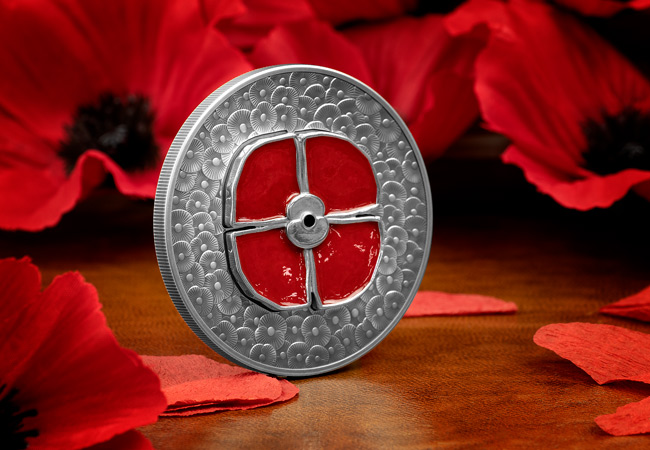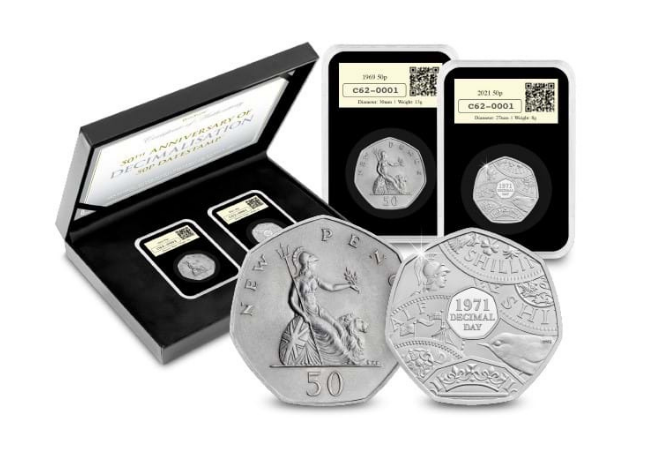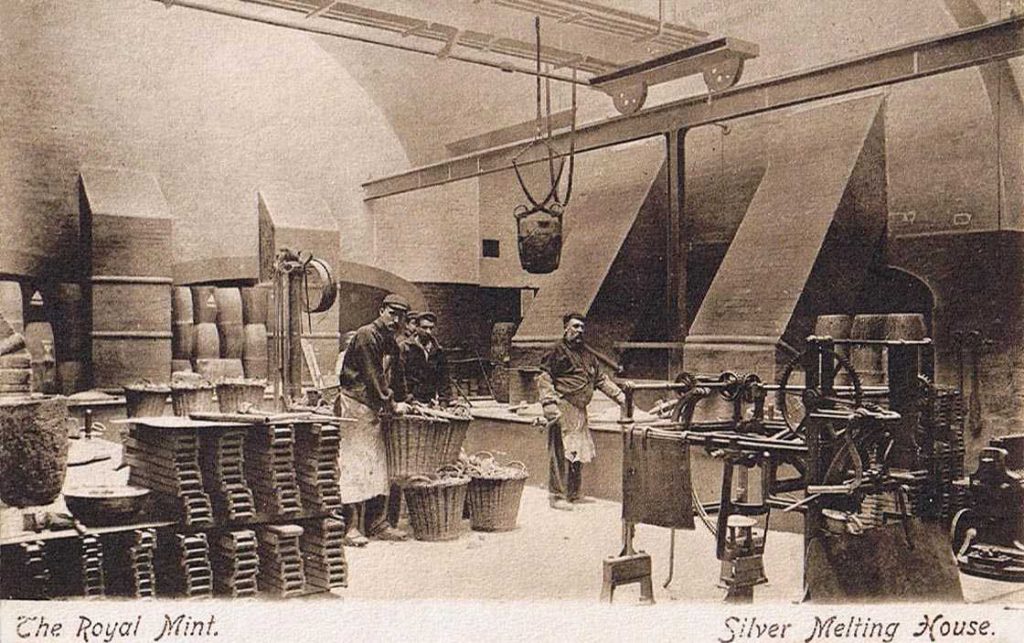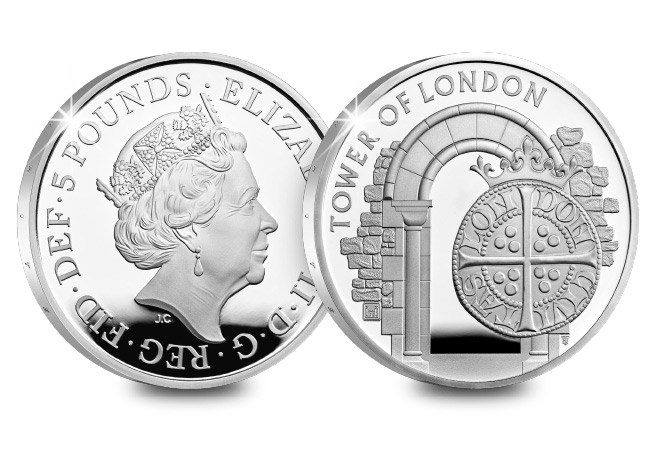Posts Tagged ‘History’
The story behind this year’s RBL Masterpiece Poppy Coin
Want to know how a 1945 British Army Mess Tin, a WWII Spitfire and a D-Day Landing Craft have been repurposed to serve as a poignant tribute to the fallen? Keep reading to find out.

Army Mess Tins 
WWII Spitfire 
Landing Crafts on D-Day
Since 2004, The Westminster Collection has felt honored to be in partnership with the Royal British Legion, supporting them year on year by raising funds which enable them to continue to provide financial, social and emotional support to members and veterans of the UK Armed Forces, their families and dependents.
In support of the Royal British Legion, each year we produce a stand-out coin to mark Remembrance Day. We call it the ‘Masterpiece’.
And now, we’re excited to announce details of this year’s ‘Masterpiece’ coin…
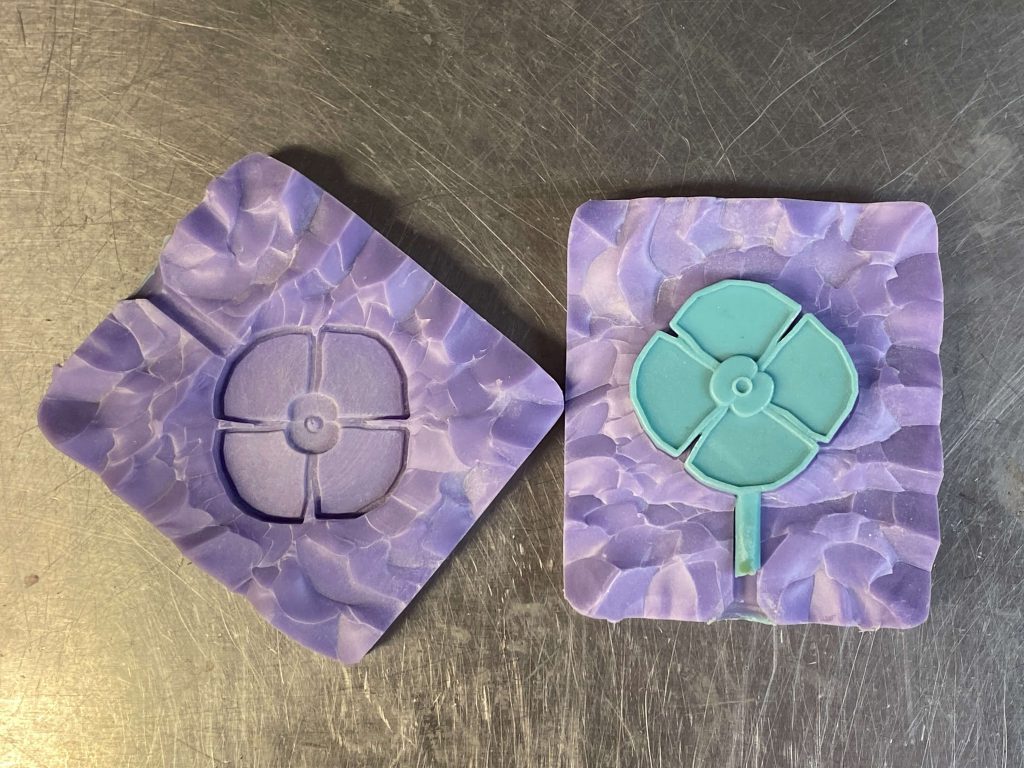
Masterpiece Poppy Coin mould 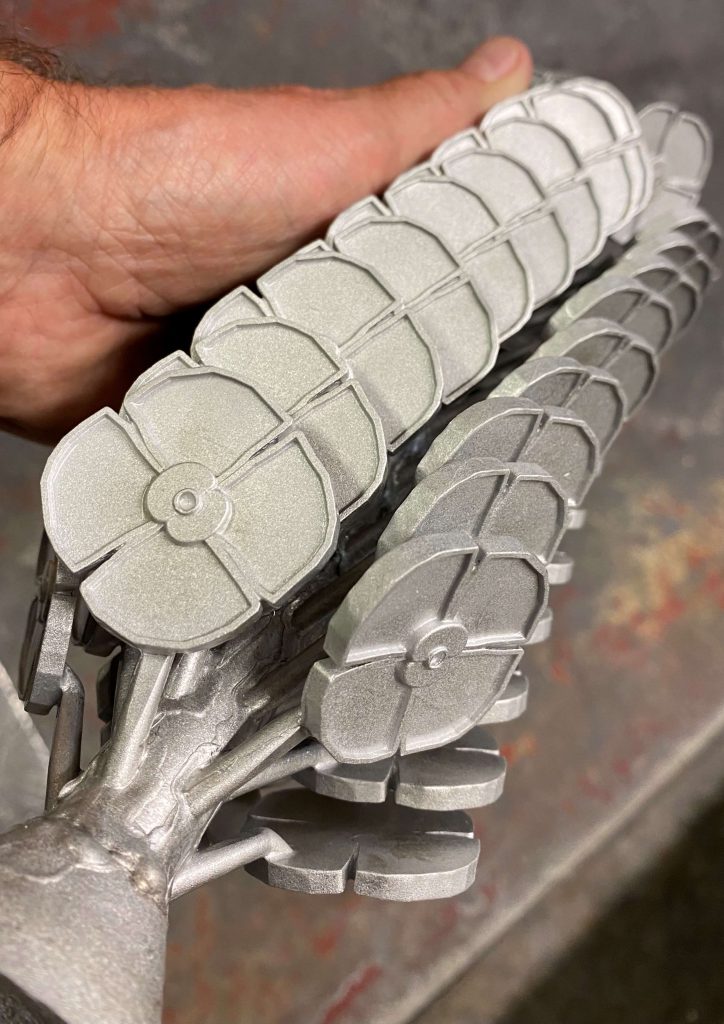
Masterpiece Poppy Coin centrepiece
When you discover the story behind the metal used to create this coin, you’ll quickly realize that it’s one of the most unique and historically fascinating coins ever released. It really does live up to its name.
The Masterpiece
As this year marks the Centenary of the Royal British Legion, an exceptional Masterpiece Poppy Coin has been released, commemorating this important milestone. It represents the three military facets of RBL ─ the Army, RAF and the Navy.
This is why we commissioned a three-dimensional ‘1921 style’ Poppy to be crafted from three pieces of historic metal representing the three divisions of the military:
1. WWII Spitfire ─ to be precise, the MK356, which flew during the D-Day campaign and shot down a German Me Bf109
2. A British Army Mess Tin from 1945
3. Landing Craft LCT7074 ─ the actual craft that landed on Gold Beach during D-Day
Historic Metals ─ crafted into a Masterpiece…
We acquired the craft metal with the kind assistance of the National Museum of the Royal Navy at Portsmouth, allowing us to source the substance from the original steel plating of the landing craft LCT 7074. LCT 7074 landed on Gold Beach on D-Day, 6th June 1944, and the plating used is from the hull that was physically in contact with the actual beach on D-Day itself. Today, LCT is the only surviving Landing Craft Tank left from this momentous day.

The LCT 7074 last surviving Landing Craft in Portsmouth 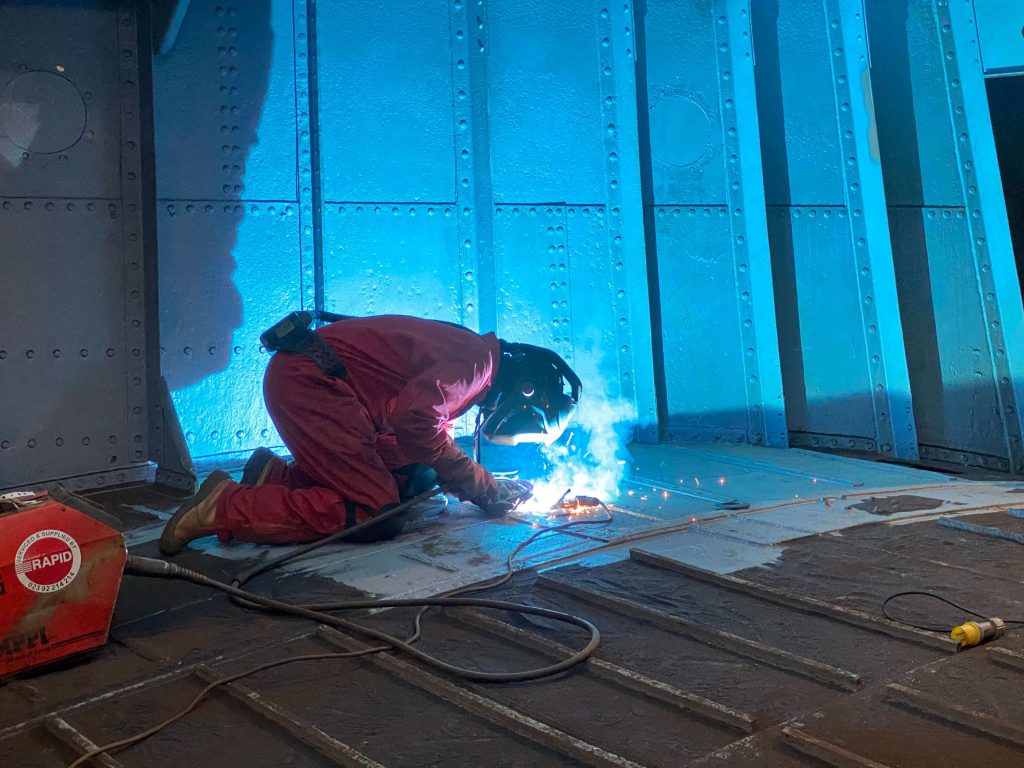
Extracting steel from the LCT 7074 Landing Craft Tank 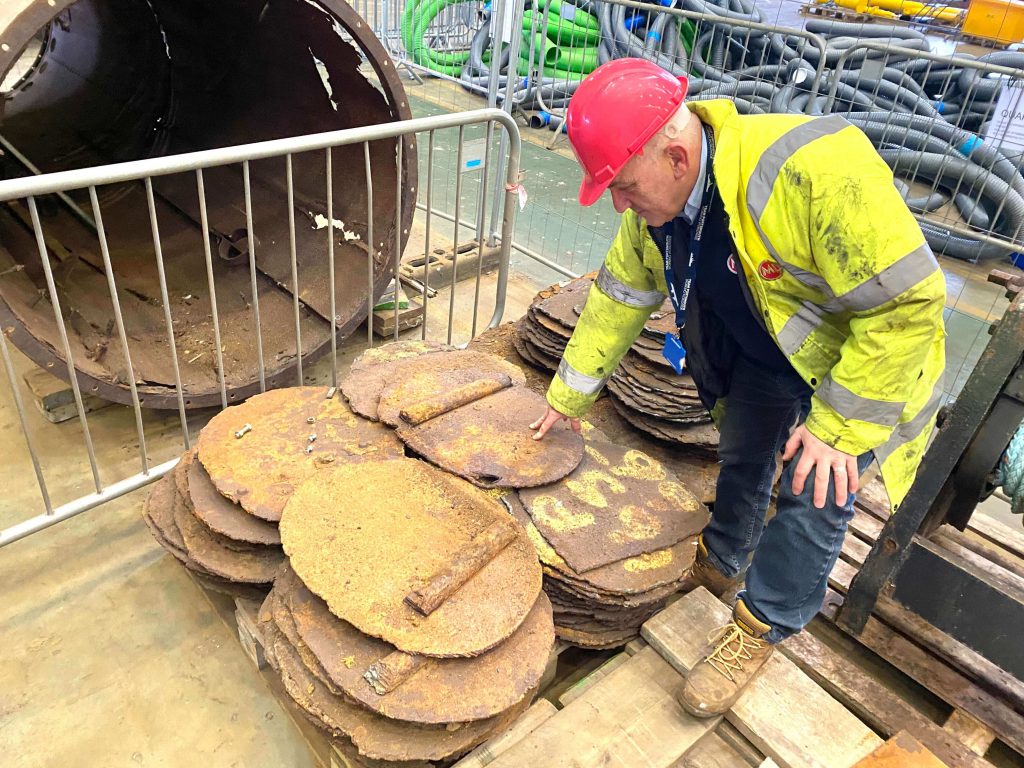
Steel taken from the LCT 7074 Landing Craft
You may notice dark spots visible within the red enamel of some Poppies ─ and these are the filings from the historic LCT 7074 Steel.
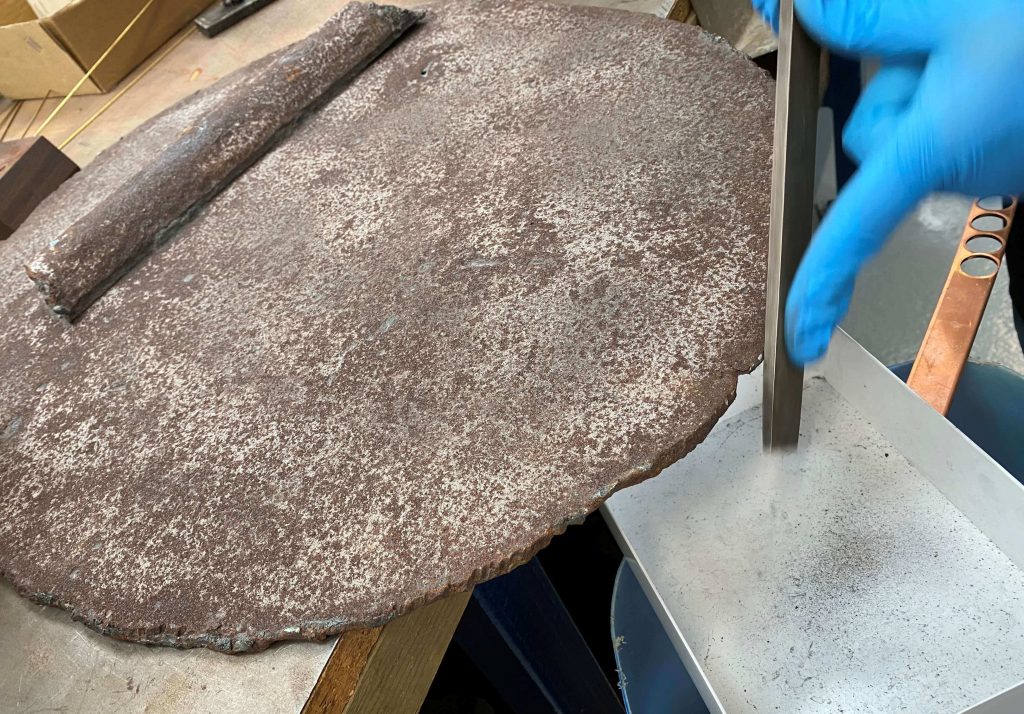
Filing the steel taken from the LCT 7074 Landing Craft 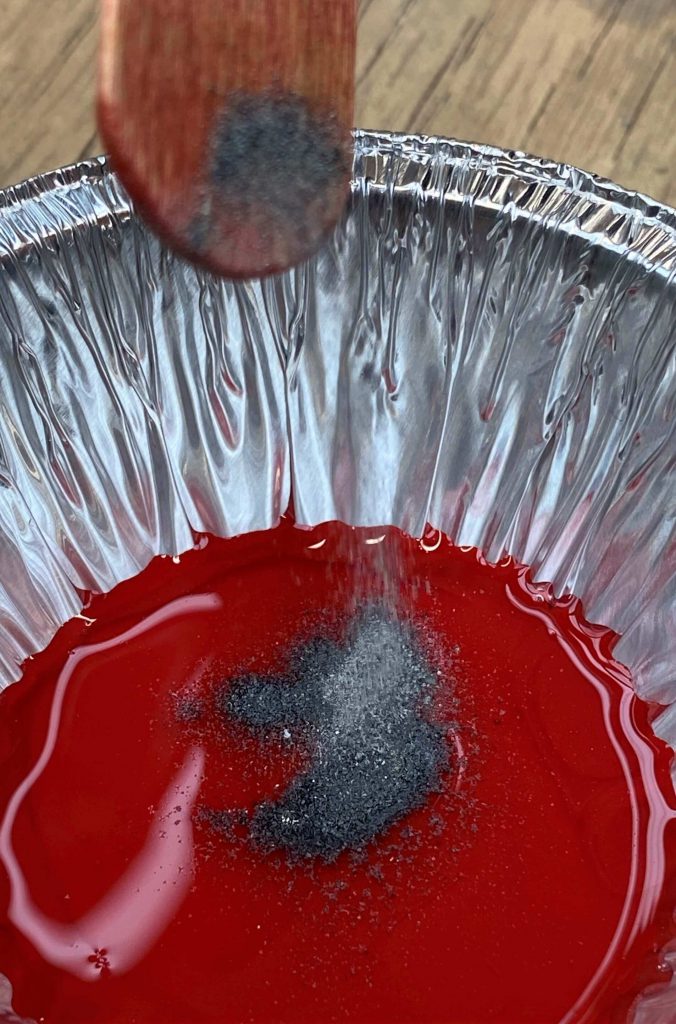
Steel filings from the LCT 7074 Landing Craft placed into the red enamel liquid for the Masterpiece Poppy Coin
The material used derived from Army origins is a combination of ex-MK356 metal and 1945 dated ex-British Army Mess Tins, mixed to a 50:50 ratio. The MK-356, officially named the Spitfire Mk IX, took an active part in D-Day operations in June 1944. The original wing main spar was removed around the year 2008, and it is this metal that has been combined with the Mess Tins.
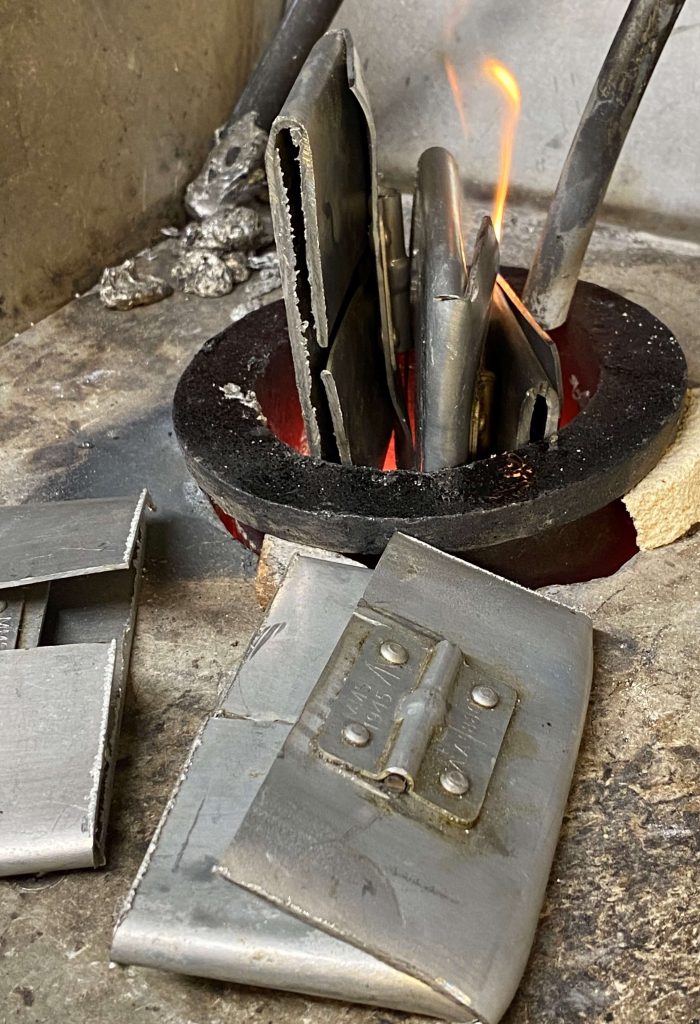
Army mess tins being melted down 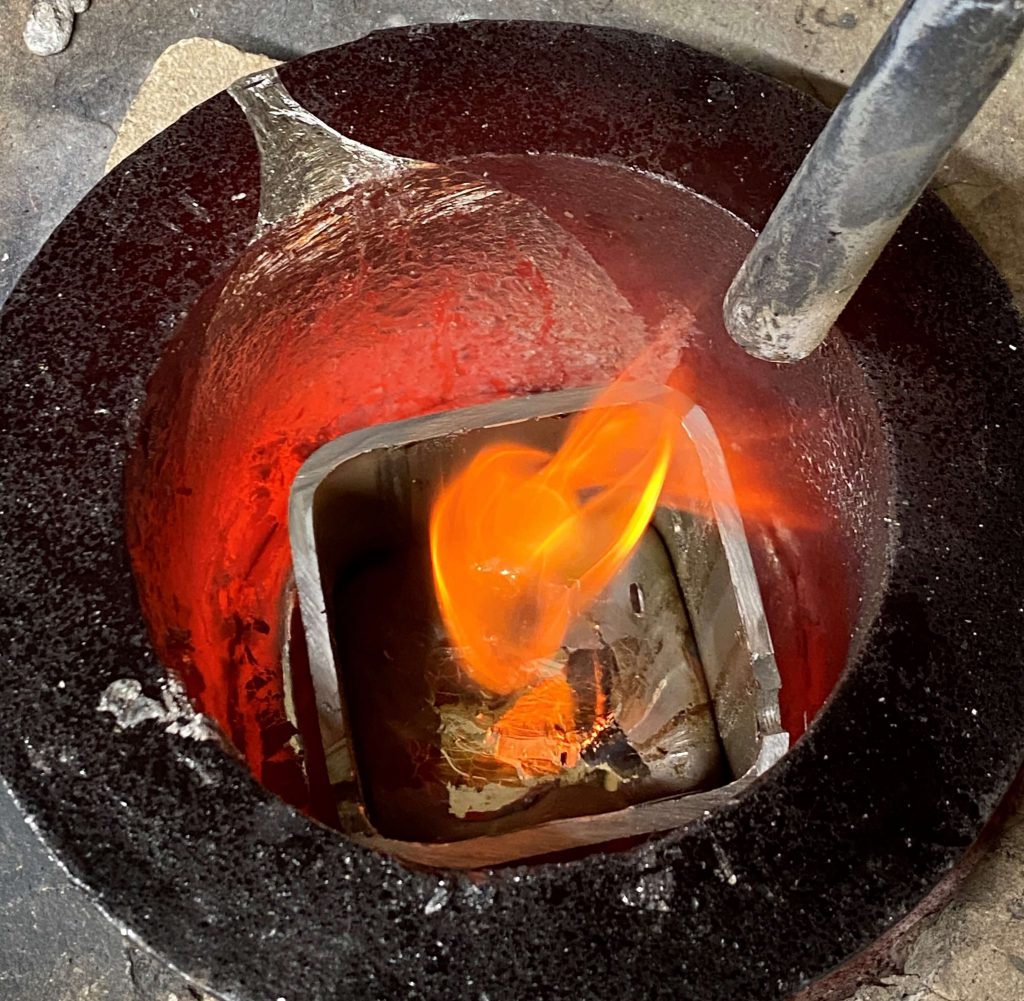
Army mess tin turning to liquid under heat
Mess tins were and still are used for a number of different things within the Army. Soldiers use them to heat food, eat from, boil water and to wash and shave in. They can be cleaned easily and used for storage of other items.
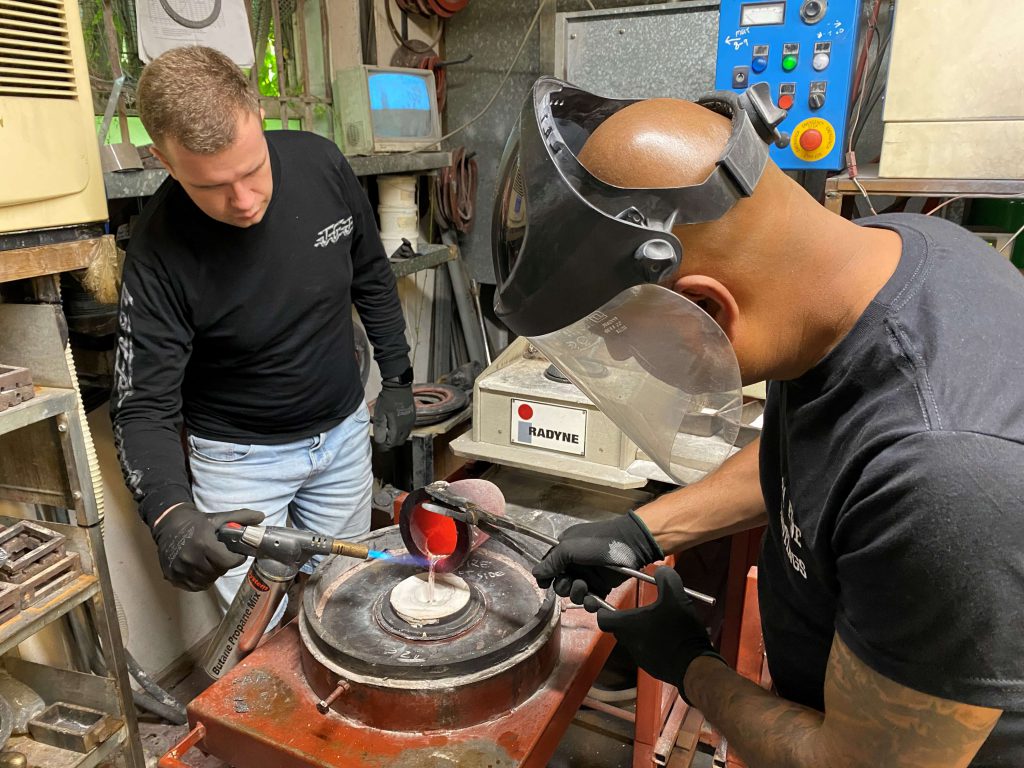
Hot Army mess tin melted liquid being handled 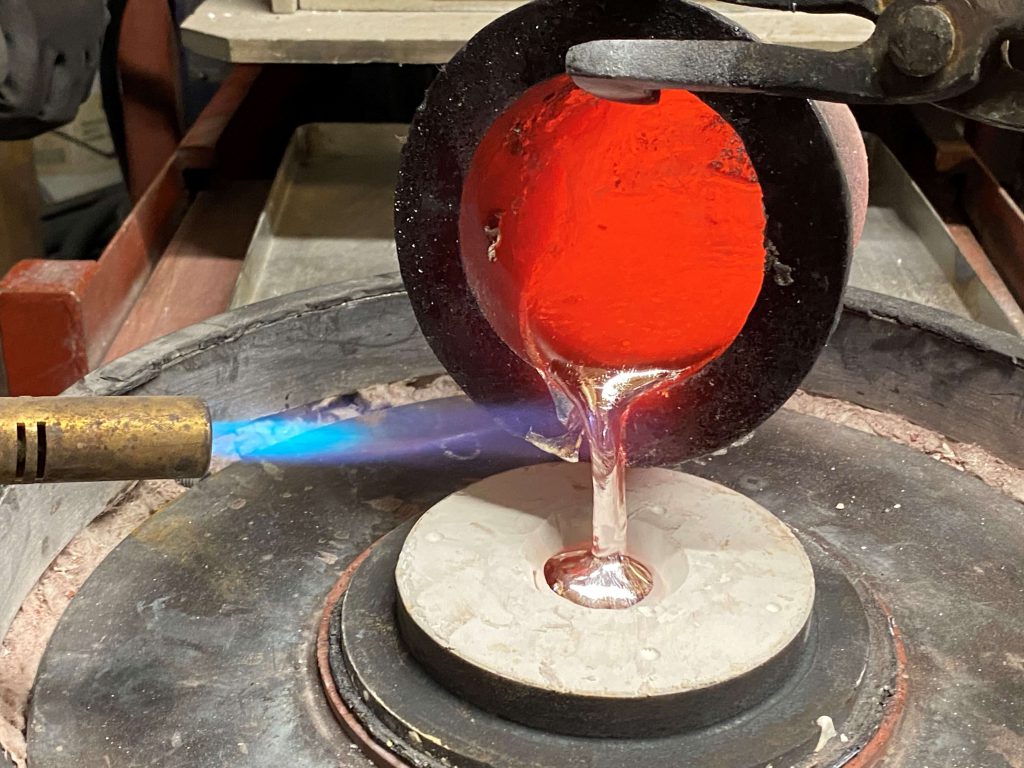
Hot Army mess tin melted liquid
During the Second World War, aluminum was a scarce commodity primarily reserved for aircraft production, and whilst perhaps not as romantic as the Spitfire, these tins are significant items ─ because an army marches on its stomach!
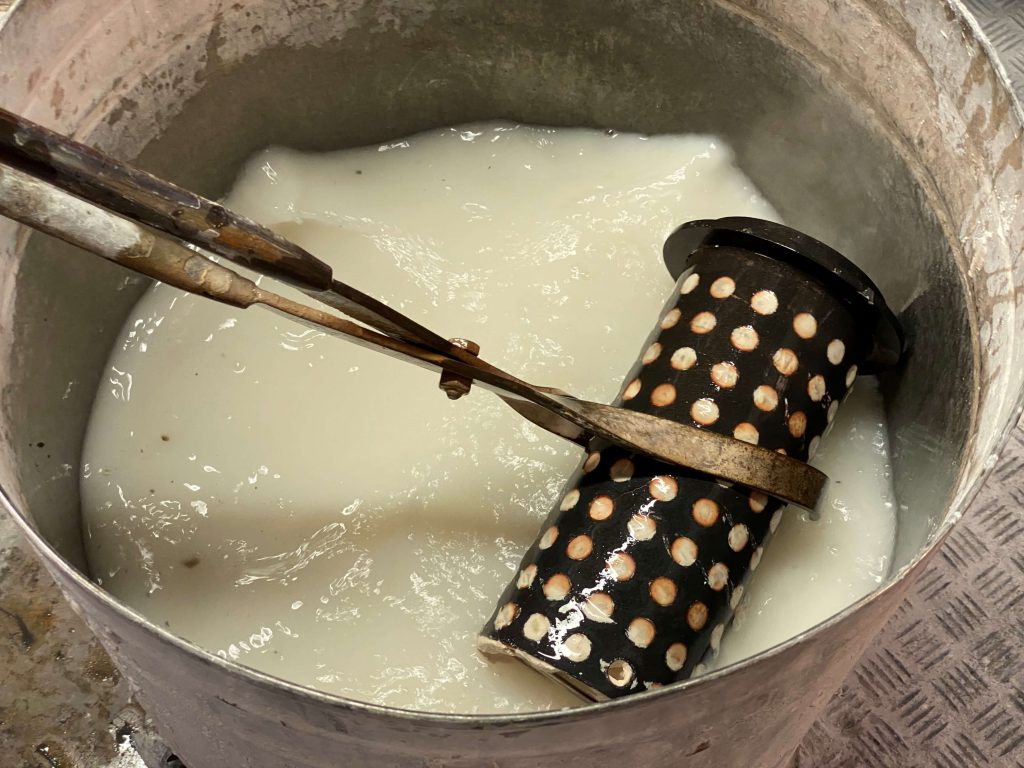
Poppy mould being put in liquid to begin the process of shaping the centrepiece for the Masterpiece 2021 Poppy Coin 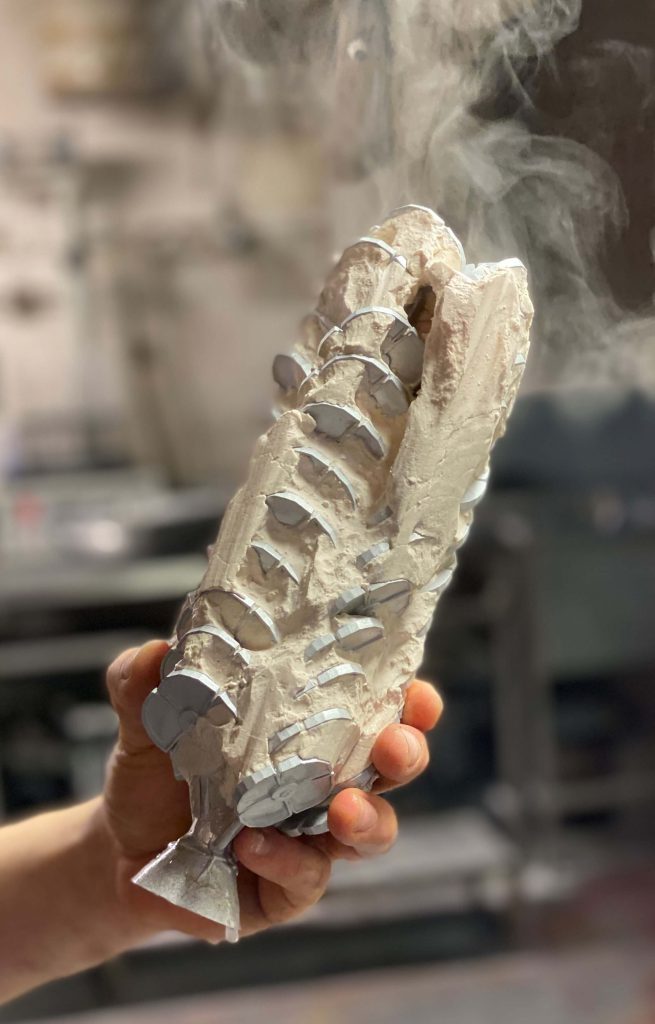
Masterpiece Poppy Coin centrepiece having come out of the liquid 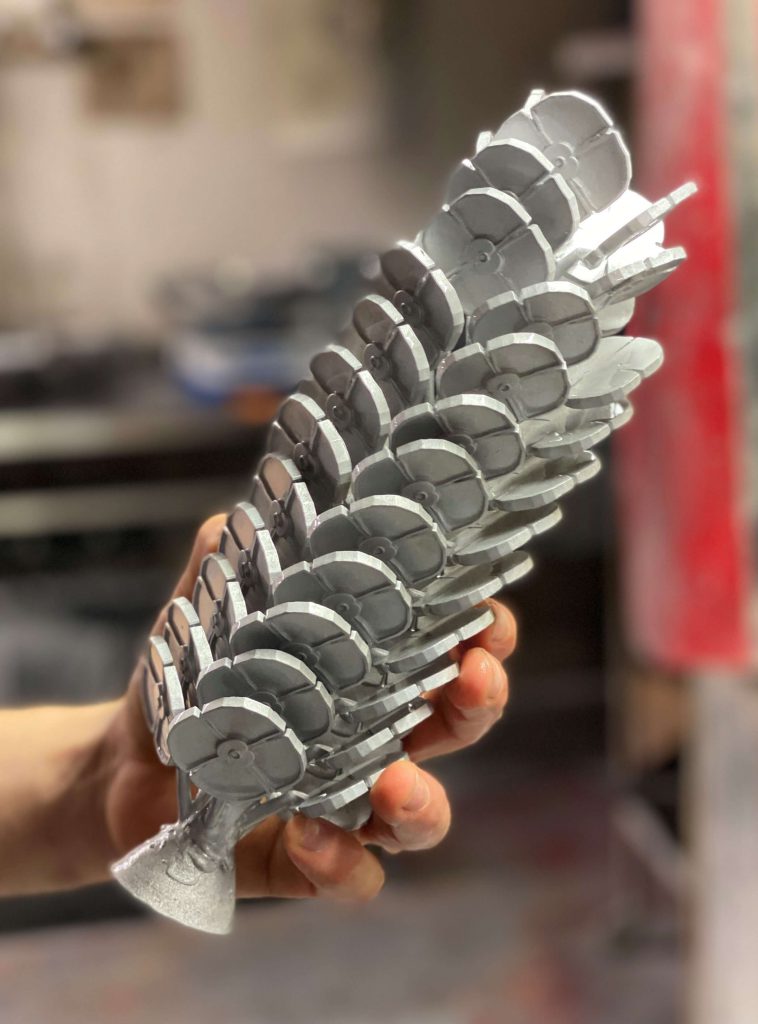
Masterpiece Poppy Coin centrepiece having been cleaned 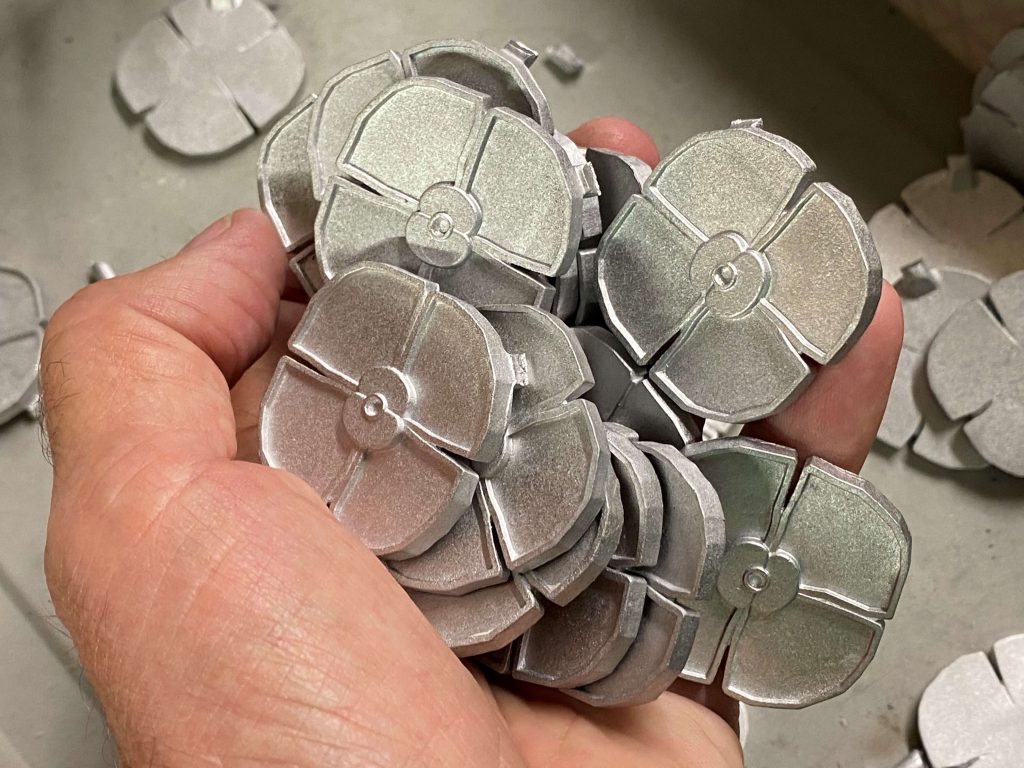
Individual Masterpiece Poppy Coin centrepieces 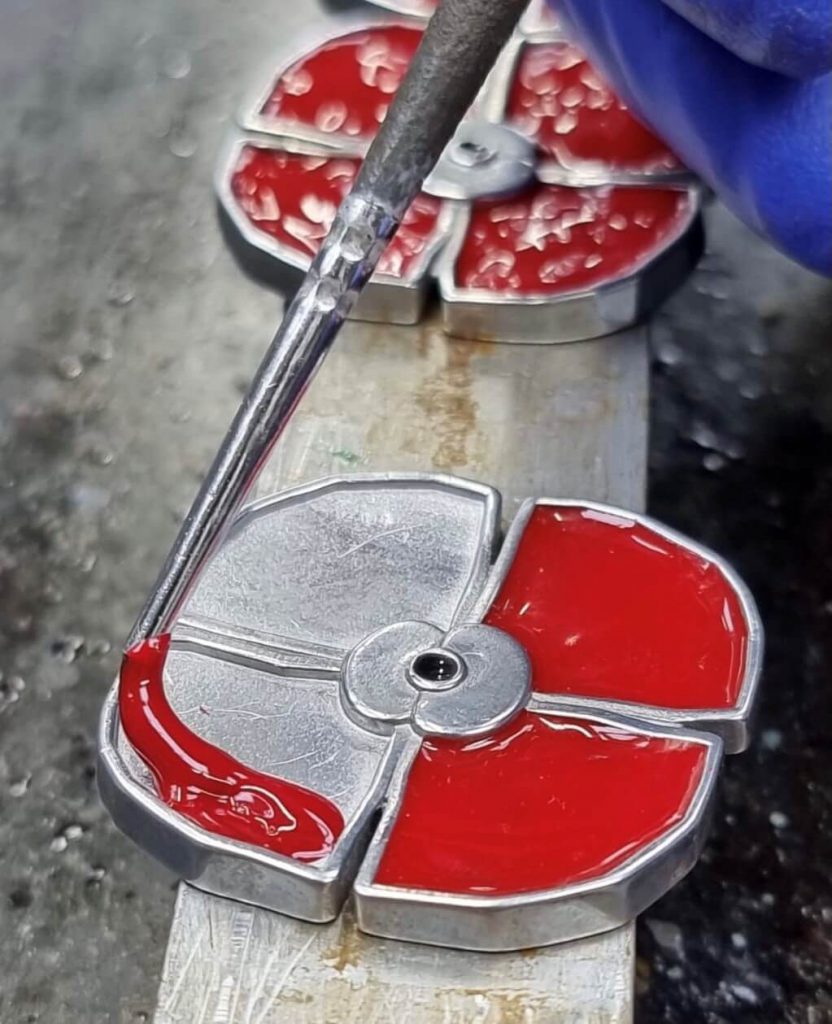
Masterpiece Poppy Coin centrepiece being filled in with the red enamel liquid 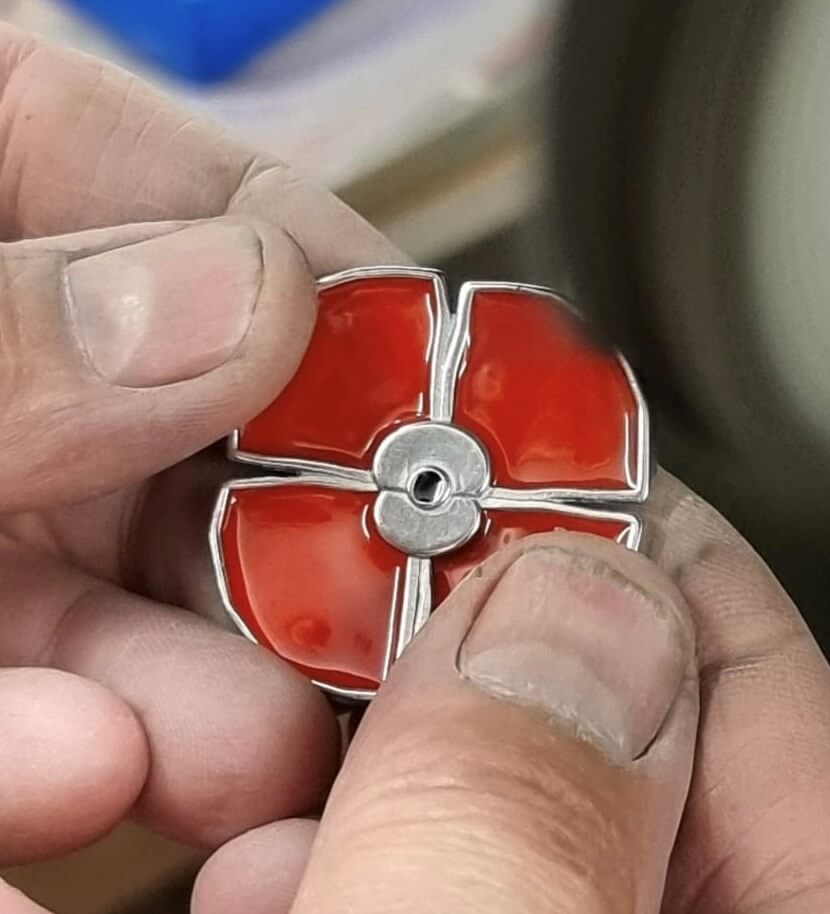
The Masterpiece Poppy Coin Centrepiece
What’s more, it has been struck from 5oz of fine 999/1000 Silver and is an impressive 65mm in diameter!
If you’re interested…
The countries that went Decimal long before the UK…
On 14th February 1971, the country went to bed with one currency, and woke with another. The following day, 15th February 1971, Britain went decimal. And this year marks the 50th anniversary of this monumental change.
The UK has been at the forefront of iconic and innovative coin designs throughout history. From King Edward III’s first gold coin which was introduced to the UK in 1344, to the experimental and iconic new designs seen on The Royal Mint’s latest issues.
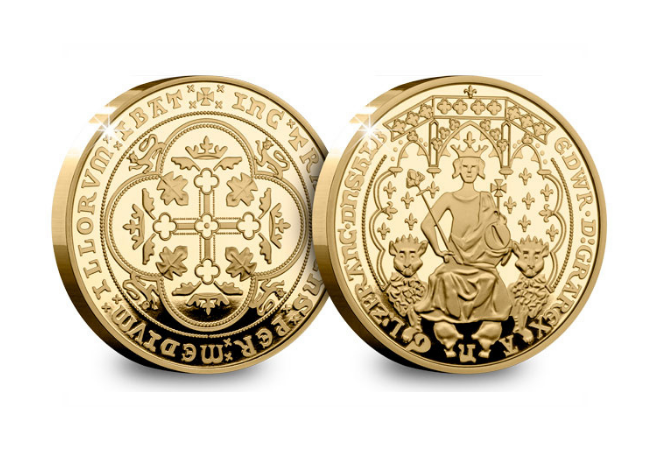
But the UK wasn’t the first country to go decimal. In fact, it was rather slow in its conversion and was one of the last countries in the world to go decimal. And the growing pressure of a world around it changing to Decimal currency would eventually push the UK to make the switch…
Who was the first?
Russia is considered the first country to go decimal, as under Tsar Peter the Great, the Russian Ruble was introduced with a sub-division of 100 Kopeks. It wasn’t until almost 100 years later in 1794 that France followed suit with the Franc, and the Netherlands was the third European country to go decimal in 1817 with the Dutch Guilder. Impressively, there are now only two countries in the world that are still using non-decimal currency – Madagascar and Mauritania (and interestingly both countries’ currencies are sub-divided into units of 5).
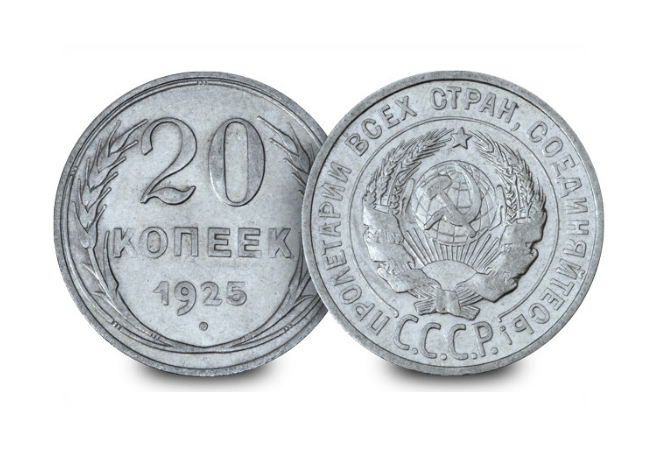
What about the Commonwealth?
By the 1960s, half the world had gone decimal and a number of Commonwealth countries had also made the switch to a decimal currency. Australia, New Zealand, and South Africa all turned to decimal throughout the 1960s giving rise to a powerful decimalisation movement in the UK. As the world around it converted to a modern decimal currency, it seemed inevitable that the UK would soon have to follow suit.
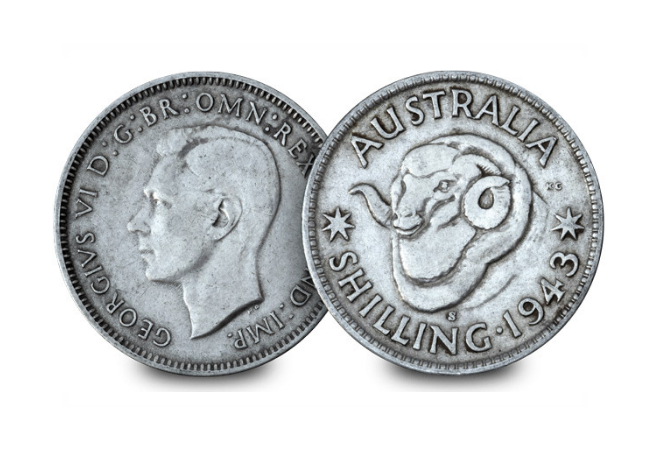
By the time the UK eventually got to Decimal Day, the majority of the world had already made the switch. That includes the likes of the US, Greece, Spain, Switzerland, The Philippines, Nova Scotia, Bolivia, China, Brazil, Jamaica, Fiji, and many more.
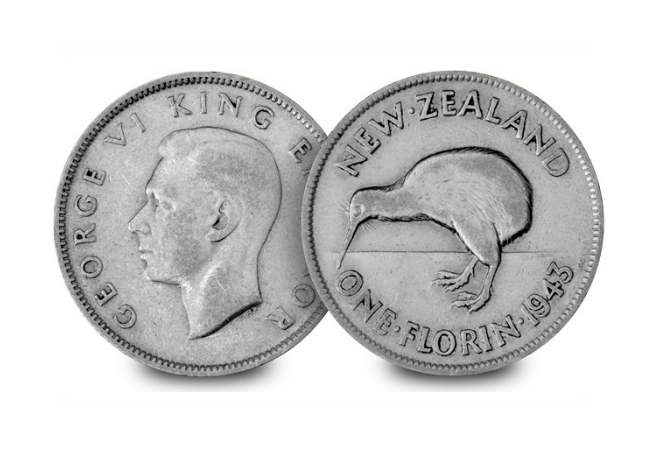
When D-Day finally came…
When Decimal Day finally arrived in 1971, many countries around the world had long since made the switch. For the UK, although the wheels had been set in motion with the introduction of the Florin 120 years prior, it wasn’t until 1968 that decimal coins officially circulated. The 10p and 5p coins were issued alongside their pre-decimal siblings, the Florin and Shilling, for almost 3 years before Decimal Day. Importantly, the first 50p coin entered our circulation in 1969, ultimately becoming the collector’s staple denomination. Fittingly, it is also the denomination that The Royal Mint have chosen to commemorate the 50th anniversary of Decimalisation this year.
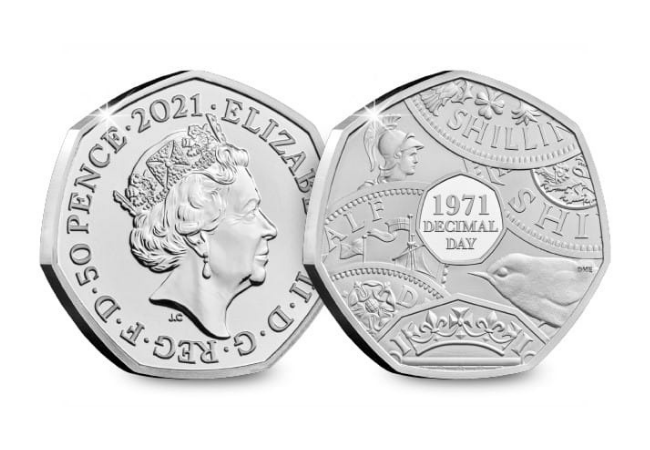
These early introductions helped the public warm to decimalisation and after seeing the world around them change. 15th February 1971 marked a long foreseen, yet inevitable event for the public – the biggest for UK coinage in over a thousand years! It altered the lives of everyone in the UK, remember these were the days before bank cards, and people had to learn a whole new currency! It is certainly an important moment in the history books.
If you’re interested: A NEW DateStamp™ has been authorised!
An original UK 1969 50p coin has been paired alongside a BRAND NEW 2021 UK 50th Anniversary of Decimalisation BU 50p to mark the upcoming 50th anniversary. Each will be officially postmarked by Royal Mail on the day, preserving your coins in a moment in time. Just 2,021 50th Anniversary of Decimalisation 50p DateStamp™ pairs have been authorised, act NOW to pre-order yours.
Tales from The Tower’s maximum security Mint – where making coins was a dangerous business
A symbol of royal power for nearly 1,000 years, the Tower of London remains one of Britain’s most iconic attractions.
But did you know that for over 500 years The Tower of London housed The Royal Mint?
It’s safe to say that during The Royal Mint’s time in The Tower, making coins was hot, noisy and dangerous affair. So much so that tampering with coins was considered treason, and the threat of gruesome punishment alone was enough to deter most, if not all, forgers and thieves.
For me, there’s no coin stories as fascinating as the ones that originate from The Royal Mint’s time a at The Tower. Here’s a selection of my very favourite ones…
Health and Safety was not a concern
In stark comparison to the society we live in today, the health and safety of Mint workers was not a top priority during the Mint’s time in The Tower.
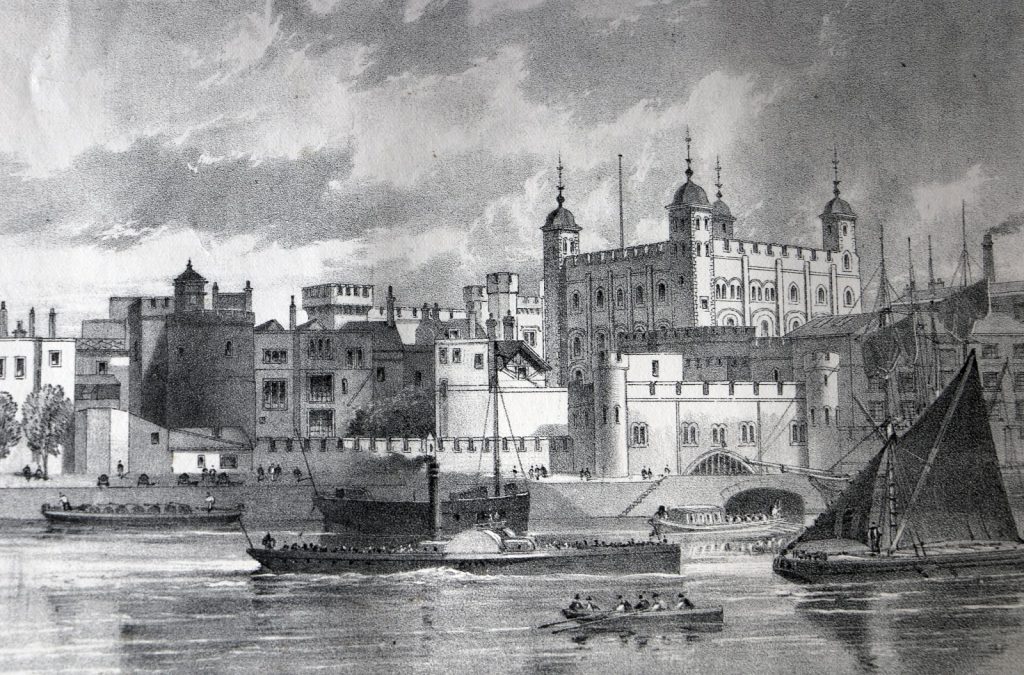
Mechanisation in the 1600’s was welcome relief for Mint workers, as up until this point, all coins were made by hand. As a result, it wasn’t unusual for workers to be injured, and the loss of fingers and eyes was not uncommon.
When it came to striking the coins, split second timing and staying alert could mean the difference between making a coin and losing a finger! That’s because in order to strike a coin, one worker would place a handmade piece of metal between two engraved stamps – called dies – and a second worker would then strike it with a hammer. This procedure would stamp the coin design on to the metal, but if both parties were not on the ball sometimes a finger would be removed in the process.
Even then, it actually wasn’t until screw-operated presses were introduced in the 1700’s that life for Mint workers became relatively safe.
Dirty, deadly money
Working in the Mint was dirty and dangerous work. Huge furnaces were used to melt down precious metal, and the air was full of deadly chemicals and poisonous gases. This made the coin making process a real hazard.
In the 1560’s a group of unfortunate German workers learned this the hard way. Several of them were suspected to have been poisoned by clouds of noxious gas, and they fell incredibly ill. Seasoned workers at the Mint advised them of the cure – to drink milk from a human skull! Despite the so called ‘cure’, several men died.
The mysterious case of Sleeping Beauty
Several decades prior to this, in the 1540’s, William Foxley was another victim of the Mint’s lax health and safety. Though how exactly, still no one to this day knows for sure! Foxley was a potter at the Mint, and one day he fell asleep over his pots and no one could wake him up.
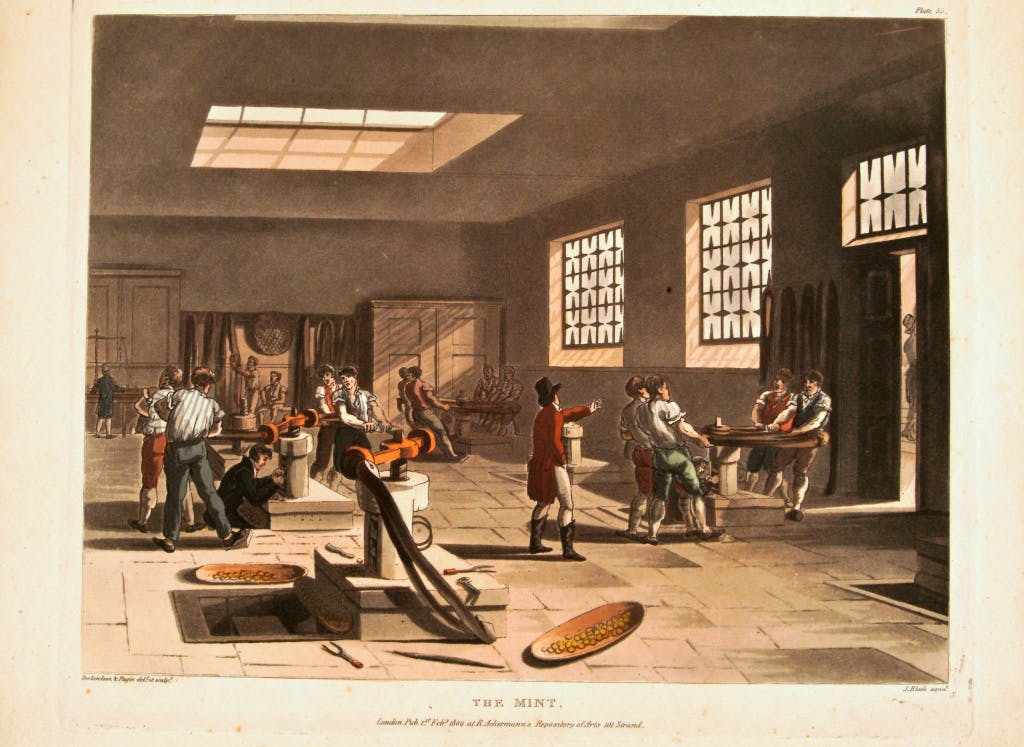
It’s unclear what exactly caused Foxley’s coma, and allegedly King Henry VIII himself swung by The Tower to check out the mysterious sleeping beauty. For the majority of the British population, the only way they knew what their monarch looked like was thanks to the obverse of the coin. So Foxley will have been disappointed to have slept through his audience with the King.
This case perplexed physicians for 14 days, after which Foxley woke up and was the picture of perfect health. Remarkably he lived for another 40 years.
Tampering with coins was considered treason
Treason was not taken lightly. In fact any tampering with coins, such as shaving silver from the edge of a coin to steal it, was classed as treason and the severe punishments that awaited thieves and forgers was nearly enough in most instances to put them off.
During medieval times, the sentence for a first-time convicted counterfeiter was to remove their right hand. Any second offences were punishable by castration. It’s unknown exactly what followed this particularly gruesome punishment for a third or even a fourth offence.
But if you think this is severe, in later years and right up until the 1700’s male forgers suffered a traitor’s death – that is to be hung, drawn and quartered. Meanwhile, female forgers were either burned at the stake or transported on one of the infamous convict ships to their designated place of exile.
If you’re interested…
The Royal Mint has just released a BRAND NEW UK £5 coin to celebrate its longstanding and fascinating history with The Tower of London.
The coin is available in a range of specifications, including Brilliant Uncirculated and extremely limited edition Silver Proof and Silver Proof Piedfort. Given the historical significance of this commemorative, it is expected to be highly sought-after by serious collectors now and in years to come. That said, we do not expect to be able to offer it for long.

